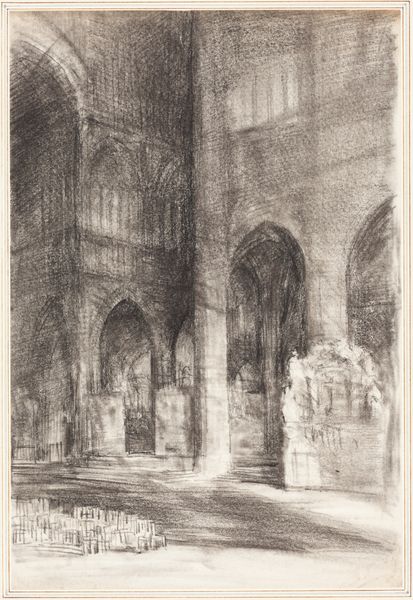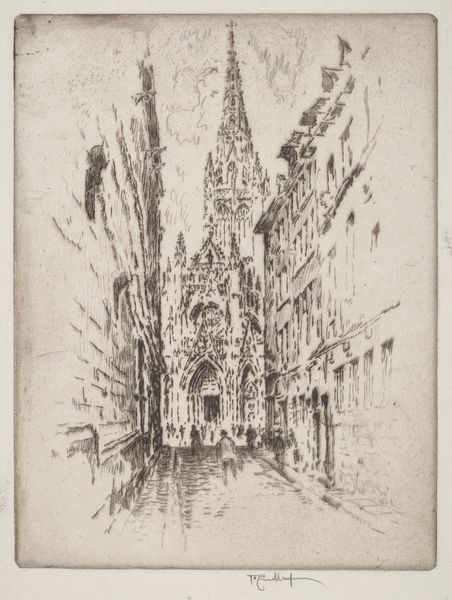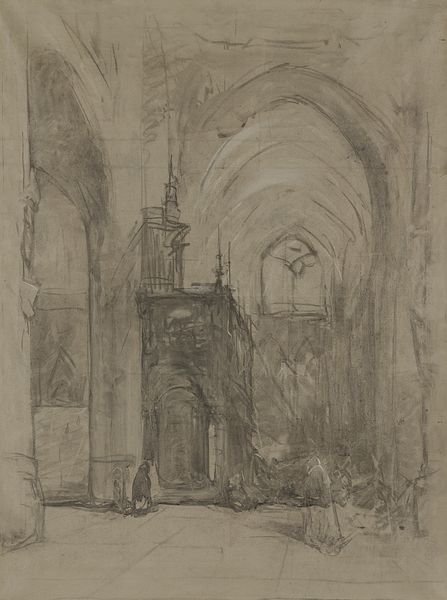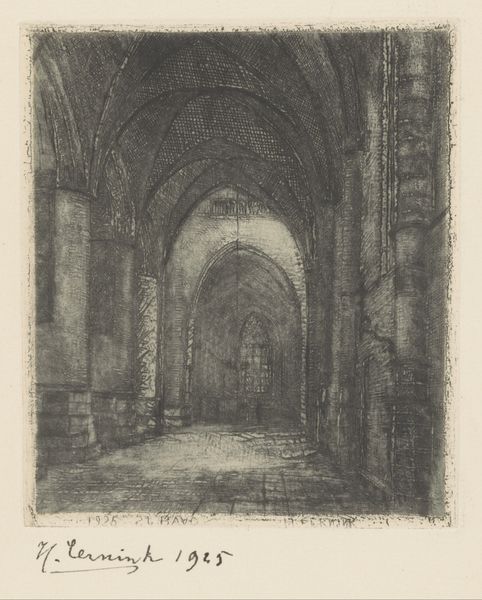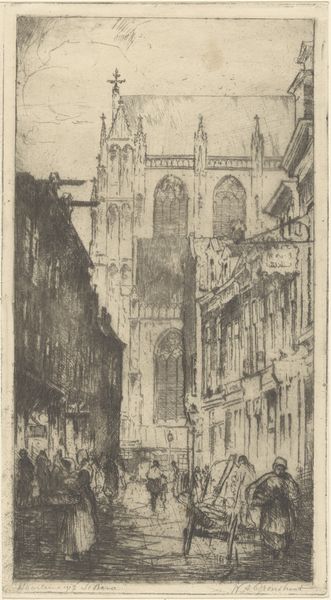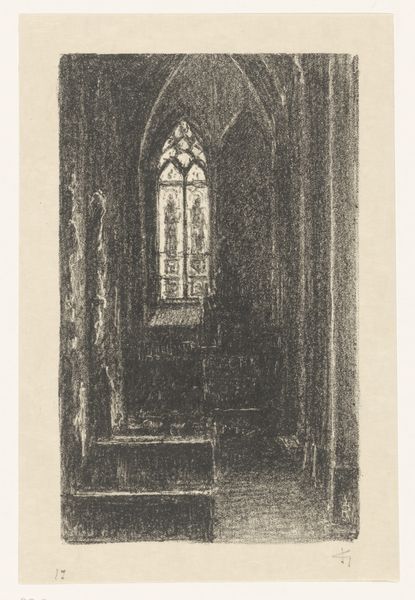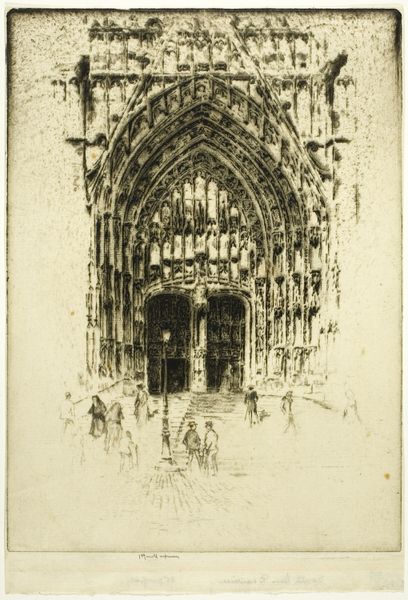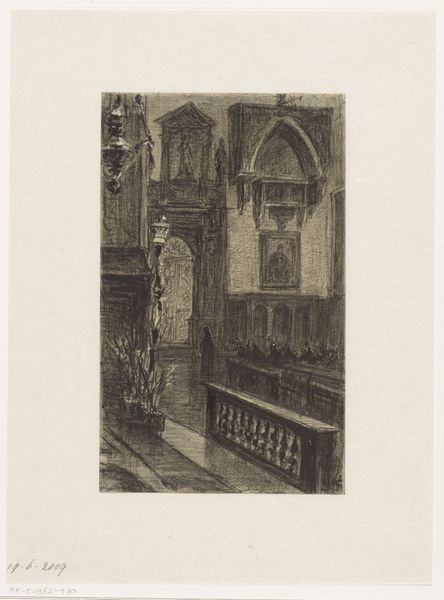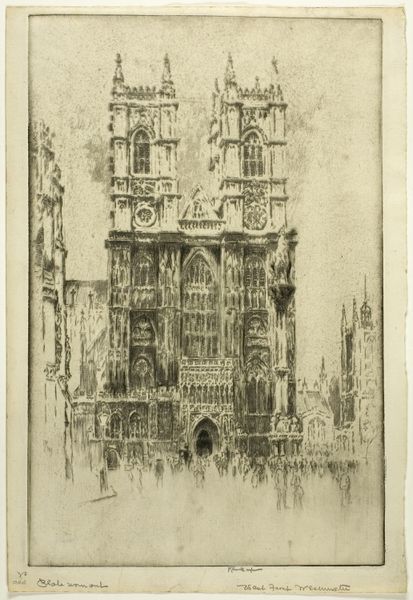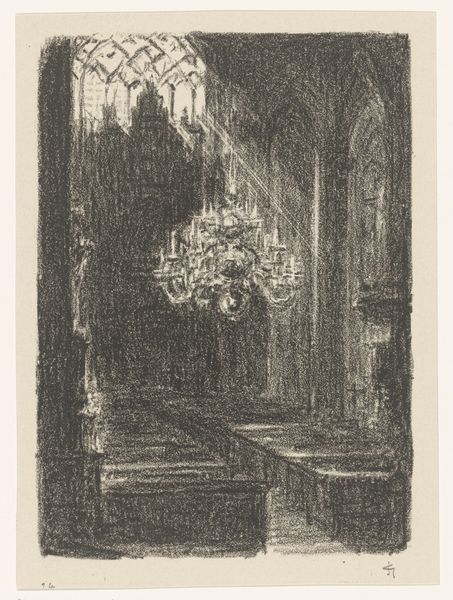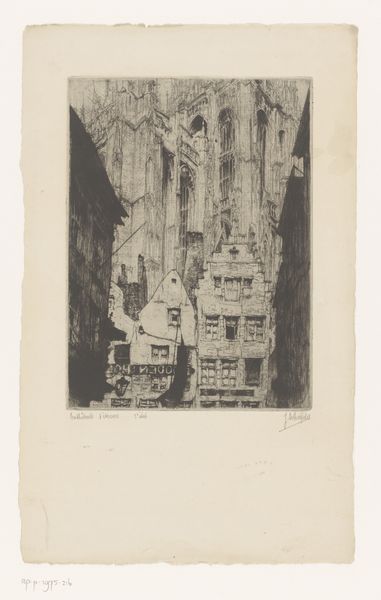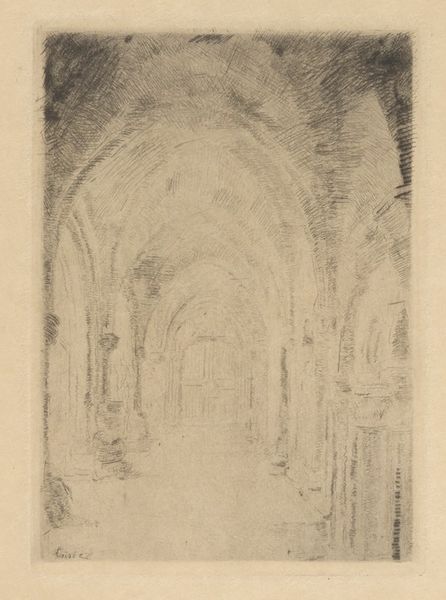
drawing, print, paper, charcoal
#
pencil drawn
#
drawing
#
amateur sketch
#
toned paper
#
light pencil work
# print
#
pencil sketch
#
charcoal drawing
#
paper
#
charcoal art
#
pencil drawing
#
plant
#
pen-ink sketch
#
water
#
united-states
#
charcoal
#
pencil art
Dimensions: 282 × 217 mm
Copyright: Public Domain
Curator: It's easy to feel small looking at this Joseph Pennell print, “The Gilded Organ Pipes,” created around 1903 and rendered in charcoal and pencil. The soaring arches, the muted light—it's immediately impressive. Editor: Yes, "impressive" is one word! It evokes a sense of sublime awe and reverence. There's something both grandiose and melancholic in its depiction of this church interior, wouldn't you agree? The texture and soft tonality create a hushed atmosphere. Curator: Absolutely. The use of charcoal gives it that quality, adding a tangible texture to the implied vastness. What cultural weight does this subject—a massive, empty church—carry for you? What feelings arise? Editor: Well, considering the context, this period saw increased industrialization in Europe and America. For some, churches offered a visual symbol of steadfastness in an era undergoing fundamental cultural shifts. The church as refuge is certainly at play here. What strikes you, iconographically, about the pipes themselves? Curator: Organ pipes always speak of order, tradition, and the symbolic voice of an institution. I notice Pennell gives prominence to the organ; as an object of immense sonic power, the pipes, especially when gilded, might symbolize not just institutional power, but even a divine, almost cosmic authority. Think of them visually, as celestial trumpets. Editor: Fascinating. Thinking about the context of Pennell’s work during this era, these kinds of churches had also become deeply enmeshed in national and civic identity, so those "celestial trumpets" are as likely to herald the symbolic, social body, as they are the heavenly. He focuses in on it in ways that call the civic role into question, no? Curator: It is intriguing that while it’s titled ‘The Gilded Organ Pipes’ much of the scene remains shrouded in darkness, leaving space for our own interpretations, and maybe our own doubts, too. Perhaps Pennell invites us to look for where that light leads us. Editor: Perhaps! I leave today more attentive to how this artwork serves as a lens for broader historical narratives around identity, faith, and national image-making. Curator: And I leave contemplating how architectural immensity invites us into resonant reflections, even those tinged with our doubts.
Comments
No comments
Be the first to comment and join the conversation on the ultimate creative platform.


